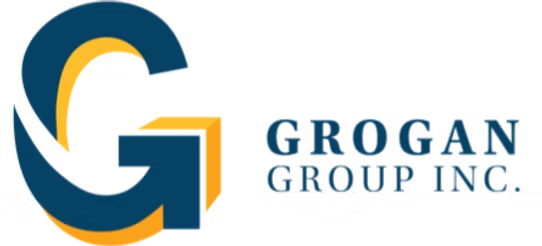Surviving the Shark Tank
- Tom Grogan

- Feb 18
- 4 min read

Plans, We Don't Need No Stinkin' Plans
Many CEOs and business owners do a less than stellar job of business planning from the very start. For most of us the attitude was “seize the day.” While that might have provided a short-term kick-start and growth, it is rarely sustainable for the long haul. At some point it can and will come back to bite you.
I believe the main reason planning is not a high priority is because the CEO does not know how to do it nor understand the value. It’s hard to see value in something “down the road.” We just move on – working in the business, not on the business. It’s very difficult to make changes when you are operating as a fireman or woman, putting out the latest fire in the business. Things can slip up on you before you are even aware of what is coming.
Take for example the construction industry – when the great recession came along residential and small commercial contractors felt the impact immediately. Their existing jobs completed quickly and with little new work they had to deal with effects immediately. Some did okay, but most did not. Many small contractors did not survive the recession. Conversely, the large contractors were working on projects that took years to complete. Lenders were obligated to construction loans and the large contractors made do. They went right through the recession, but their wake-up call came later – in late 2011-2014. However, they had more time to figure out what to do and action to take. Those that took advantage of what everyone viewed as a downturn, hiring people leaving smaller or less prepared firms, came out ready for the inevitable return of growth.
Hope for the Best, Plan for the Worst
During the uncertainty of the recession, developers, architects, and clients all put new projects on hold and there they stayed until restarting around 2010. That was good news. The bad news was how long it took to get a project of that size designed, approved, and off the ground. All contractors were impacted by the recession, but at different times and scale. The big contractors who were prepared, weathered the storm, and are still thriving today.
The point here is that planning is not static. It’s a topic we discuss at almost every Vistage meeting I lead.
But what does “growth” look like in challenging times? It may be increasing market share in a drastically shrinking market, increasing net profit while experiencing slower revenue generation, right-sizing to reflect current conditions. The best companies are prepared for whatever may come.
A very successful person once said –
“Those who fail to plan…plan to fail”
- Benjamin Franklin
Before I started my own company, or joined Vistage as a group member, or followed my path to become a Vistage Chair and Executive Coach, I spent 16 years in corporate. I worked for a firm with over 2,000 employees. This was a company that had strong leadership at the top – people who understood process and procedures, budgets, forecasting, and accountability. I learned the importance of these things and embraced them in how I learned to manage. The lessons were invaluable when I left to start my own company, but what about those of us who never worked in a corporate environment? It is no less important that we learn these tried-and-true management skills.
“Experience is the best teacher, but only if it’s someone else's. It's too expensive to learn on your own”
- Old Latin Proverb with my addition
The Ideal Business Plan
The very cornerstone of what I learned in corporate is how to prepare and execute a successful business plan and it starts with the core values of a company. So what does that plan look like?
It will define the Core Values of the company. These are the foundational stones around the company's culture. It’s the “what I will” and “what I won’t do.”
It will define the companies Mission – the reason the company exists to serve its clients.
It will articulate its Vision – what it aspires to be in the future.
It will tell the why of the company – its Purpose.
It will place in quantifiable terms its aspirations over a three to five year period, with each year getting closer to the current year in greater detail.
In that detail will lie the strategies, goals, objectives, and tasks required to be successful:
Financial requirements (incl. Budgets and Cash Flow Projections)
Human capital requirements (incl. Skills and Training)
Resources (incl. Infrastructure, Systems, Applications)
In other words, a roadmap to success you can feel safe enough to present to the sharks in the tank.
Contact me if you’d like to hear more about the keys to a successful strategic plan. Watch out Mark Cuban!
About the Author: I draw from a background in corporate and private business to help fellow executives fulfill their potential as people and as leaders. I can be reached Tom.Grogan@VistageChair.com.




Comments